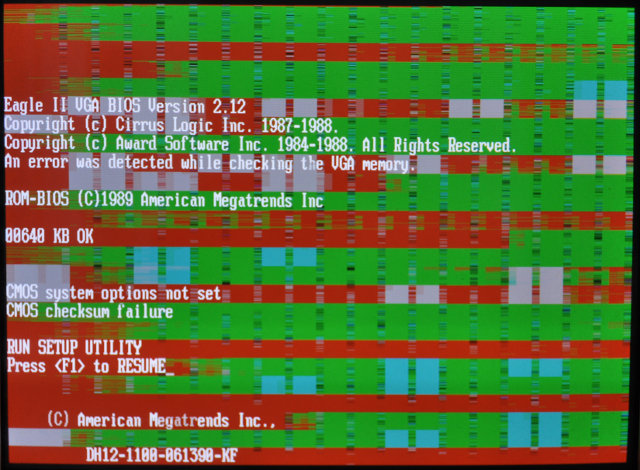First post, by Malvineous
- Rank
- Oldbie
Hi all,
I got a collection of "as-is" ISA cards off eBay recently, and one of them is an 8-bit ISA VGA card (an Osborne branded card with a Cirrus GD520A chip.) I'd like to keep this for use in an XT, however it looks like the video memory has gone bad:

The display is fine with another card, so it's definitely a fault with this particular card.
How would you go about repairing this? I'd like to avoid desoldering each memory chip unless I have to, so can these chips be tested in-circuit? Can you still buy new pin-compatible replacements for them?
The memory chips on the card all say "8902" and "VT4464P10". My 286 motherboard manual says it can take 4464 DRAM chips, and looking around it seems like this is a fairly standard type of memory, but perhaps not one that is manufactured any more. Is this right?
It looks like the 4464 is a one-bit memory chip, which would explain why there are eight of them on this card. That doesn't really explain why the text is OK and only the attributes are corrupted though, as those are stored in alternating bytes, so you'd think all chips would be used for both text and attributes if they were connected in parallel.
Maybe there's a way to disable one chip at a time (perhaps by grounding the data output line) to see whether the corruption disappears when one or more of the chips aren't returning data?
Any other suggestions/ideas?